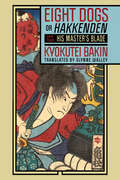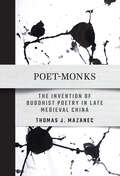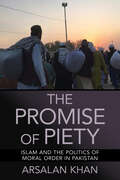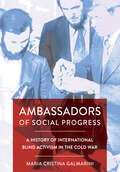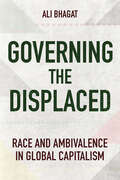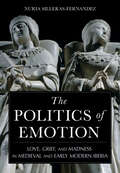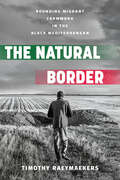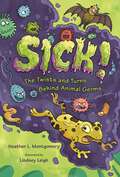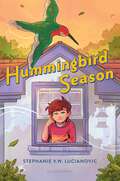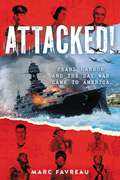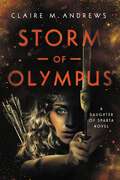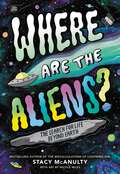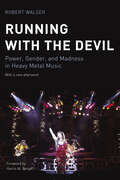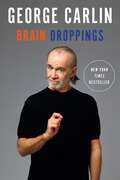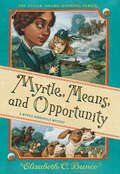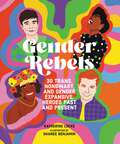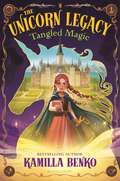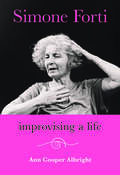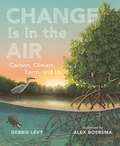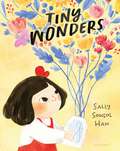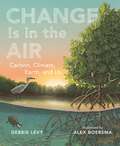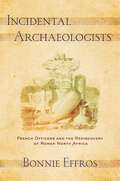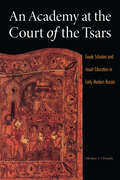- Table View
- List View
Eight Dogs, or "Hakkenden": Part Two—His Master's Blade
by Kyokutei BakinKyokutei Bakin's Nansō Satomi Hakkenden is one of the monuments of Japanese literature. This multigenerational samurai saga was one of the most popular and influential books of the nineteenth century and has been adapted many times into film, television, fiction, and comics.His Master's Blade, the second part of Hakkenden, begins the story of the eight Dog Warriors created from the mystic union between Princess Fuse and the dog Yatsufusa and born into eight different samurai families in fifteenth-century Japan. The first is Inuzuka Shino, orphaned descendent of proud warriors. Left with nothing save a magical sword and the bead that marks him as a Dog Warrior, young Shino escapes his evil aunt and uncle and sets out to restore his family name. Unaware of their karmic bond, Shino and the other Dog Warriors are drawn into a world of vendettas and quests, gallants, and rogues, as each strives to learn his true nature and find his place in the eight-man fraternity.
Poet-Monks: The Invention of Buddhist Poetry in Late Medieval China
by Thomas J. MazanecPoet-Monks focuses on the literary and religious practices of Buddhist poet-monks in Tang-dynasty China to propose an alternative historical arc of medieval Chinese poetry. Combining large-scale quantitative analysis with close readings of important literary texts, Thomas J. Mazanec describes how Buddhist poet-monks, who first appeared in the latter half of Tang-dynasty China, asserted a bold new vision of poetry that proclaimed the union of classical verse with Buddhist practices of repetition, incantation, and meditation.Mazanec traces the historical development of the poet-monk as a distinct actor in the Chinese literary world, arguing for the importance of religious practice in medieval literature. As they witnessed the collapse of the world around them, these monks wove together the frayed threads of their traditions to establish an elite-style Chinese Buddhist poetry. Poet-Monks shows that during the transformative period of the Tang-Song transition, Buddhist monks were at the forefront of poetic innovation.
The Promise of Piety: Islam and the Politics of Moral Order in Pakistan
by Arsalan KhanIn The Promise of Piety, Arsalan Khan examines the zealous commitment to a distinct form of face-to-face preaching (dawat) among Pakistani Tablighis, practitioners of the transnational Islamic piety movement the Tablighi Jamaat. This group says that Muslims have abandoned their religious duties for worldly pursuits, creating a state of moral chaos apparent in the breakdown of relationships in the family, nation, and global Islamic community. Tablighis insist that this dire situation can only be remedied by drawing Muslims back to Islam through dawat, which they regard as the sacred means for spreading Islamic virtue. In a country founded in the name of Muslim identity and where Islam is ubiquitous in public life, the Tablighi claim that Pakistani Muslims have abandoned Islam is particularly striking. The Promise of Piety shows how Tablighis constitute a distinct form of pious relationality in the ritual processes and everyday practices of dawat and how pious relationality serves as a basis for transforming domestic and public life. Khan explores both the promise and limits of the Tablighi project of creating an Islamic moral order that can transcend the political fragmentation and violence of life in postcolonial Pakistan.
Ambassadors of Social Progress: A History of International Blind Activism in the Cold War (NIU Series in Slavic, East European, and Eurasian Studies)
by Maria Cristina GalmariniAmbassadors of Social Progress examines the ways in which blind activists from the Soviet Union and Eastern Europe entered the postwar international disability movement and shaped its content and its course. Maria Cristina Galmarini shows that the international work of socialist blind activists was defined by the larger politics of the Cold War and, in many respects, represented a field of competition with the West in which the East could shine. Yet, her study also reveals that socialist blind politics went beyond propaganda. When socialist activists joined the international blind movement, they initiated an exchange of experiences that profoundly impacted everyone involved. Not only did the international blind movement turn global disability welfare from philanthropy to self-advocacy, but it also gave East European and Soviet activists a new set of ideas and technologies to improve their own national movements. By analyzing the intersection of disability and politics, Ambassadors of Social Progress enables a deeper, bottom-up understanding of cultural relations during the Cold War. Galmarini significantly contributes to the little-studied history of disability in socialist Europe, and ultimately shows that disability activism did not start as an import from the West in the post-1989 period, but rather had a long and meaningful tradition that was rooted in the socialist system of welfare and needed to be reinvented when this system fell apart.
Governing the Displaced: Race and Ambivalence in Global Capitalism
by Ali BhagatGoverning the Displaced answers a straightforward question: how are refugees governed under capitalism in this moment of heightened global displacement? To answer this question, Ali Bhagat takes a dual case study approach to explore three dimensions of refugee survival in Paris and Nairobi: shelter, work, and political belonging. Bhagat's book makes sense of a global refugee regime along the contradictory fault lines of passive humanitarianism, violent exclusion, and organized abandonment in the European Union and East Africa. Governing the Displaced highlights the interrelated and overlapping features of refugee governance and survival in these seemingly disparate places. In its intersectional engagement with theories of racial capitalism with respect to right-wing populism, labor politics, and the everyday forms of exclusion, the book is a timely and necessary contribution to the field of migration studies and to political economy.
The Politics of Emotion: Love, Grief, and Madness in Medieval and Early Modern Iberia
by Nuria Silleras-FernandezThe Politics of Emotion explores the intersection of powerful emotional states—love, melancholy, grief, and madness—with gender and political power on the Iberian Peninsula from the Middle Ages to the early modern period. Using an array of sources—literary texts, medical treatises, and archival documents—Nuria Silleras-Fernandez focuses on three royal women: Isabel of Portugal (1428–1496), queen-consort of Castile; Isabel of Aragon (1470–1498), queen-consort of Portugal; and Juana of Castile (1479–1555), queen of Castile and its empire. Each of these women was perceived by their contemporaries as having gone "mad" as a result of excessive grief, and all three were related to Isabel the Catholic (1451–1504), queen of Castile and a woman lauded in her time as a paragon of reason.Through the lives and experiences of these royal women and the observations, judgments, and machinations of their families, entourages, and circles of writers, chronicles, courtiers, moralists, and physicians in their orbits, Silleras-Fernandez addresses critical questions about how royal women in Iberia were expected to behave, the affective standards to which they were held, and how perceptions about their emotional states influenced the way they were able to exercise power. More broadly, The Politics of Emotion details how the court cultures in medieval and early modern Castile and Portugal contributed to the development of new notions of emotional excess and mental illness.
The Natural Border: Bounding Migrant Farmwork in the Black Mediterranean
by Timothy RaeymaekersThe Natural Border tells the recent history of Mediterranean rural capitalism from the perspective of marginalized Black African farm workers. Timothy Raeymaekers shows how in the context of global supply chains and repressive border regimes, agrarian production and reproduction are based on fundamental racial hierarchies.Taking the example of the tomato—a typical 'Made in Italy' commodity—Raeymaekers asks how political boundaries are drawn around the land and the labor needed for its production, what technologies of exclusion and inclusion enable capitalist operations to take place in the Mediterranean agrarian frontier, and which practices structure the allocation, use and commodification of land and labor across the tomato chain. While the mobile infrastructures that mobilize, channel, commodify and segregate labor play a central role in the 'naturalization' of racial segregation, they are also terrains of contestation and power—and thus, as The Natural Border demonstrates, reflect the tense socio-ecological transformation the Mediterranean border space is going through today.
Sick!: The Twists and Turns Behind Animal Germs
by Heather L. MontgomeryWhen a super sickness lands on the land, when a parasite becomes more than a pest, when an infection ignites an epidemic, what's a body to do? Your body is an animal body, so why not ask the animals?Follow the scientists, around the world and into their labs, who are studying animals and the germs that attack them. From fungus-ridden frogs with fevers to bacteria-resistant buzzards and everything in-between, animals have A LOT to teach us about infections. But-reader beware!!-the story of germs is filled with twists and turns.In this fascinating, highly visual nonfiction book packed with colorful, comic-style art, you'll discover not only the cool ways that animal bodies (and our bodies) fight back against pesky pathogens, but also the amazing and surprising ways we can learn to work together with germs.Sick! The Twists and Turns Behind Animal Germs is written by Heather L. Montgomery with graphic novel-style art from Lindsey Leigh.
Sick!: The Twists and Turns Behind Animal Germs
by Heather L. MontgomeryWhen a super sickness lands on the land, when a parasite becomes more than a pest, when an infection ignites an epidemic, what's a body to do? Your body is an animal body, so why not ask the animals?Follow the scientists, around the world and into their labs, who are studying animals and the germs that attack them. From fungus-ridden frogs with fevers to bacteria-resistant buzzards and everything in-between, animals have A LOT to teach us about infections. But-reader beware!!-the story of germs is filled with twists and turns.In this fascinating, highly visual nonfiction book packed with colorful, comic-style art, you'll discover not only the cool ways that animal bodies (and our bodies) fight back against pesky pathogens, but also the amazing and surprising ways we can learn to work together with germs.Sick! The Twists and Turns Behind Animal Germs is written by Heather L. Montgomery with graphic novel-style art from Lindsey Leigh.
Hummingbird Season
by Stephanie V.W. LucianovicA poignant and necessary story about finding hope during difficult times, set in the early days of the Covid-19 pandemic.Archie's life--and the whole world--is turned upside down by Covid-19. Suddenly there are no more Friday night dinners out, no more going to school, no more hanging out with friends . . . no leaving the house at all. Even though he's inside with his family all day every day, Archie can't help but feel more alone than ever before. While everyone else seems to be adapting to their new normal just fine, it's like Archie is permanently on mute, unable to find the words to describe how he feels--and sometimes, unable to find someone who will listen. The bright spot of Archie's days at home is watching and learning about the hummingbirds that feed outside his windows. But just when it seems like this could be what brings his family together again, California experiences its worst wildfire in history, and Archie's favorite hummingbird disappears. In a time when hope is hard to hold on to, Archie must find his voice and find hope once again.Hummingbird Season is an honest and healing novel in verse documenting the early days of the Covid-19 pandemic and the things that bring us together when circumstances keep us apart.
Attacked!: Pearl Harbor and the Day War Came to America
by Marc FavreauThe true story of Pearl Harbor as you&’ve never read it before—action-packed, informative, and told through the eyes of a diverse group of people who experienced the terror of the unprecedented attack firsthand. A single day changed the course of history: December 7, 1941. Nobody in America knew Japan&’s attack on Pearl Harbor was coming. Nobody was prepared for the aftermath. It became a defining moment from which the country never truly recovered. Perfect for fans of Steve Sheinkin and Deborah Heiligman, this unflinching narrative puts readers on the ground in Pearl Harbor through the stories of real people who experienced the attack and its aftereffects. It alternates between the sweeping views and fateful decisions of leaders such as FDR and on-the-ground accounts from soldiers and sailors of all backgrounds as well as an array of other unique participants and observers. Attacked! sheds new, compelling light onto a history we think we know, what it means to be American, and the enduring lessons from an event we never saw coming.
Storm of Olympus (Daughter of Sparta #3)
by Claire AndrewsThe heart-pounding conclusion to the Daughter of Sparta series forces Daphne to face her past, her deepest fears, and an enemy who can defeat even the all-powerful gods of Olympus in this epic reimagining of classic Greek mythology, for fans of Circe. After fighting in the Trojan War against her own people, Daphne is plagued by memories of her family, of her shortcomings, of her lover, Apollo, and of the secrets he and the gods keep. As she reels from the horrendous sacrifice she had to make and her own failure in the battle for Troy, she knows the Titans are out there—just beyond the island of Aeaea where she has taken refuge—raging a war against the world. As Daphne struggles to regain her will to fight as well as rein in the new abilities that have been thrust upon her, the gods call for her help once more. But it has been prophesized that she will bring about the ruin of Olympus and the downfall of Sparta, just as she caused the destruction of Troy. Now, as she begins to witness her terrible destiny coming true, she must become a hero to rival those of myth and save the gods, her people, and the world. Or she will watch it all burn around her. Claire M. Andrews has crafted a jaw-dropping conclusion to an epic series that gives women a powerful place among Greek mythology, flipping the world of gods and goddesses on its head. This breakneck race to the finish will have readers devouring its pages late into the night with one mind blowing twist after another, in a finale fit for a heroine who rivals any Ancient Greek hero.
Where Are the Aliens?: The Search for Life Beyond Earth
by Stacy McAnultyA fun-filled, highly illustrated, science-based exploration into one of the universe&’s greatest mysteries—does life exist beyond Earth?—from bestselling and award-winning author Stacy McAnulty. Spoiler: Scientists haven&’t discovered life beyond Earth, not even a single teeny-tiny organism. But there&’s a whole lot of outer space, and humans have searched only a fraction of a fraction of it. So do you believe in the possibility of life out there? Or do you think Earth is perfectly unique in its ability to grow organisms?Where Are the Aliens? takes readers on a journey of theories and discoveries, from the big bang and primordial soup, to how the ancient Greeks considered the cosmos, to the technology used today to listen and (possibly!) communicate with far-off exoplanets. Packed with playful illustrations and fascinating factoids, this is the perfect book for anyone who has ever looked up and asked, "What's out there?"
Running with the Devil: Power, Gender, and Madness in Heavy Metal Music (Music / Culture)
by Robert WalserWinner of the 1994 Irving Lowens Book Award from the Society for American MusicDismissed by critics and academics, condemned by parents and politicians, and fervently embraced by legions of fans, heavy metal music continues to attract and embody cultural conflicts that are central to society. In Running with the Devil, Robert Walser explores how and why heavy metal works, both musically and socially, and at the same time uses metal to investigate contemporary formations of identity, community, gender, and power. This edition includes a new foreword by Harris M. Berger contextualizing the work and a new afterword by the author.
Brain Droppings
by George CarlinSometimes, a little brain damage can help. A book of original humor pieces by beloved comic George Carlin. Filled with thoughts, musings, questions, lists, beliefs, curiosities, monologues, assertions, assumptions, and other verbal ordeals, Brain Droppings is infectiously funny. Also included are two timeless monologues, "A Place for Your Stuff" and "Baseball-Football." Readers will get an inside look into Carlin's mind, and they won't be disappointed by what they find: I buy stamps by mail. It works OK until I run out of stamps.What year did Jesus Christ think it was?A tree: first you chop it down, then you chop it up.Have you ever noticed the lawyer is always smiling more than the client?I put a dollar in one of those change machines. Nothing changed.If you ever have chicken at lunch and chicken at dinner, do you ever wonder if the two chickens knew each other? Carlin demolishes everyday values and yet leaves you laughing out loud.
Myrtle, Means, and Opportunity (Myrtle Hardcastle Mystery 5)
by Elizabeth C. BunceIn the fifth book of the Edgar Award-winning series, Myrtle Hardcastle uncovers a string of murders during a treasure hunt on a haunted Scottish estate. When her governess inherits an estate on a Scottish island, amateur detective Myrtle Hardcastle couldn't be more excited. Unfortunately, the ancestral castle is both run-down and haunted. Ghostly moans echo in the walls, and there are rumors of a cursed treasure lost on the island—an ancient silver brooch that may have cost the former lord his life. But who had the motive, means, and opportunity to kill him? And could this Scottish trip mean the end of Myrtle's plans to get her father and governess together? Then Myrtle's investigation stirs a villain out of hiding. The estate&’s boat is stolen, so there&’s no escape from the island. Myrtle is forced to play a deadly game, hunting for the brooch with a thief breathing down her neck—someone who will stop at nothing to get the treasure, even if it means murder.
Gender Rebels: 30 Trans, Nonbinary, and Gender Expansive Heroes Past and Present
by Katherine LockeThis fully illustrated book celebrates the history of thirty trans, gender expansive, and nonbinary heroes throughout the world. Explore the history of trans and nonbinary people throughout the world in this gorgeously illustrated nonfiction book for young teens. Readers will be educated and enlightened about gender-expansive people who have made a difference in our history and who continue to help raise awareness of diversity and inclusion in current society. Introductory materials give readers an insight into pronoun usage, the history of the word "transgender," and more before providing engaging and fascinating information about thirty trans, gender expansive, and nonbinary people who have helped shape our world. From Callon of Epidaurus (the first intersex individual to receive surgery) to Elliot Page (a trans actor) to Tomoya Hosoda (the first trans politician in Japan), this book will open up dialogue and help educate young adults on the history, legacy, and future of trans, gender expansive, and nonbinary people and their rights at a time when protecting those rights is needed more than ever. The book is complete with sidebars about trans topics, a reference guide, and a glossary of terminology.
The Unicorn Legacy: Tangled Magic
by Kamilla Benko"A sparkling page-turner full of surprising twists, clever girls, and magical wonders!" -Tui Sutherland, #1 New York Times bestselling author of the Wings of Fire seriesFrom the creator of The Unicorn Quest series, a wondrous new series set in the magical land of Arden, full of unicorns and mystery!Magic pulses bright in Arden, a world where humans who craft magic have been at war and separated for hundreds of years. Now a new era has dawned, the unicorns have returned, and the prime minister has decreed that apprentices from all four guilds will learn in the newly formed Unicorn Academy. But peace is tenuous: As rumors spread of dark magic and of unicorns disappearing, twelve-year-old apprentice Olivia Hayes is caught between her joy at newfound magical abilities at the academy and proving to everyone that her older sister, Laurel, is NOT a unicorn poacher. She and her friends must untangle the truth and the secrets of the past to spin a stronger future-or else the unicorns of Arden may be lost forever. This sweeping middle grade fantasy is about friendship, choice, and the ties that truly matter.
Simone Forti: Improvising a Life
by Ann Cooper AlbrightSimone Forti, groundbreaking improvisor, has spent a lifetime weaving together the movement of her mind with the movement of her body to create a unique oeuvre situated at the intersection of dancing and art practices. Her seminal Dance Constructions from the 1960s crafted a new approach to dance composition and helped inspire the investigations of Judson Dance Theater. In the 1970s, Forti's explorations of animal movements expanded that legacy to launch improvisation as a valuable artform in its own right. From her early forays into vocal accompaniment to her News Animations, Forti has long integrated gesture and text into compelling performances that consistently stretched the boundaries of dance to layer abstract movement with story-telling and political commentary. Her "Land Portraits" series brought an immersive ecological experience to New York City stages in the 1980s, and she is a beloved teacher and mentor whose Body, Mind, World workshops have inspired dancers around the world. In this beautifully written book, author Ann Cooper Albright braids archival research, extensive interviews, and detailed movement analyses of Forti's performances to provide the first kinesthetically-informed and critically-nuanced history of Forti's multifaceted and extensive career.Publication of this book is funded by the Beatrice Fox Auerbach Foundation Fund at the Hartford Foundation for Public Giving.
Change Is in the Air: Carbon, Climate, Earth, and Us
by Debbie LevyA nonfiction picture book about amazing ways that the Earth removes carbon from the air, and amazing ways people can help, offering a fresh and hopeful perspective on climate change.The Earth has a problem: there's too much carbon in the air. Luckily, the Earth also has amazing powers to remove carbon dioxide from the atmosphere-like the power of kelp, mangroves, and dirt. Although these powers alone cannot get us out of the climate crisis we're facing, the Earth has another important power: the power of people! People have the power to change, protect, innovate, and invent. In this informational picture book, Debbie Levy and Alex Boersma paint an encouraging yet honest picture of the problems at hand and some of the ways that we can address them. Thanks to the power of nature and the ingenuity of people, change is in the air!
Tiny Wonders
by Sally Soweol HanThe world is full of wonders, if we take a small moment to look! A beautiful story about everyday magic.April's town is dull and gray, and the people there are too busy to laugh or look up at the sky. But when April remembers Grandma's stories about wonder in the world, like the secret language of flowers, April wonders: Can dandelions help? Planting tiny seeds while the seasons shift towards spring, April watches as the dandelions and other flowers sprout, bringing more than a little wonder back to her community.Debut author-illustrator Sally Soweol Han's gorgeous and inspirational story encourages young readers to consider how they too can plant a little wonder in the world.
Change Is in the Air: Carbon, Climate, Earth, and Us
by Debbie LevyA nonfiction picture book about amazing ways that the Earth removes carbon from the air, and amazing ways people can help, offering a fresh and hopeful perspective on climate change.The Earth has a problem: there's too much carbon in the air. Luckily, the Earth also has amazing powers to remove carbon dioxide from the atmosphere-like the power of kelp, mangroves, and dirt. Although these powers alone cannot get us out of the climate crisis we're facing, the Earth has another important power: the power of people! People have the power to change, protect, innovate, and invent. In this informational picture book, Debbie Levy and Alex Boersma paint an encouraging yet honest picture of the problems at hand and some of the ways that we can address them. Thanks to the power of nature and the ingenuity of people, change is in the air!
Tiny Wonders
by Sally Soweol HanThe world is full of wonders, if we take a small moment to look! A beautiful story about everyday magic.April's town is dull and gray, and the people there are too busy to laugh or look up at the sky. But when April remembers Grandma's stories about wonder in the world, like the secret language of flowers, April wonders: Can dandelions help? Planting tiny seeds while the seasons shift towards spring, April watches as the dandelions and other flowers sprout, bringing more than a little wonder back to her community.Debut author-illustrator Sally Soweol Han's gorgeous and inspirational story encourages young readers to consider how they too can plant a little wonder in the world.
Incidental Archaeologists: French Officers and the Rediscovery of Roman North Africa
by Bonnie EffrosIn Incidental Archaeologists, Bonnie Effros examines the archaeological contributions of nineteenth-century French military officers, who, raised on classical accounts of warfare and often trained as cartographers, developed an interest in the Roman remains they encountered when commissioned in the colony of Algeria. By linking the study of the Roman past to French triumphant narratives of the conquest and occupation of the Maghreb, Effros demonstrates how Roman archaeology in the forty years following the conquest of the Ottoman Regencies of Algiers and Constantine in the 1830s helped lay the groundwork for the creation of a new identity for French military and civilian settlers.Effros uses France's violent colonial war, its efforts to document the ancient Roman past, and its brutal treatment of the region's Arab and Berber inhabitants to underline the close entanglement of knowledge production with European imperialism. Significantly, Incidental Archaeologists shows how the French experience in Algeria contributed to the professionalization of archaeology in metropolitan France.Effros demonstrates how the archaeological expeditions undertaken by the French in Algeria and the documentation they collected of ancient Roman military accomplishments reflected French confidence that they would learn from Rome's technological accomplishments and succeed, where the Romans had failed, in mastering the region.
An Academy at the Court of the Tsars: Greek Scholars and Jesuit Education in Early Modern Russia (NIU Series in Slavic, East European, and Eurasian Studies)
by Nikolaos A. ChrissidisThe first formally organized educational institution in Russia was established in 1685 by two Greek hieromonks, Ioannikios and Sophronios Leichoudes. Like many of their Greek contemporaries in the seventeenth century, the brothers acquired part of their schooling in colleges of post-Renaissance Italy under a precise copy of the Jesuit curriculum. When they created a school in Moscow, known as the Slavo-Greco-Latin Academy, they emulated the structural characteristics, pedagogical methods, and program of studies of Jesuit prototypes. In this original work, Nikolaos A. Chrissidis analyzes the academy's impact on Russian educational practice and situates it in the contexts of Russian-Greek cultural relations and increased contact between Russia and Western Europe in the seventeenth century. Chrissidis demonstrates that Greek academic and cultural influences on Russia in the second half of the seventeenth century were Western in character, though Orthodox in doctrinal terms. He also shows that Russian and Greek educational enterprises were part of the larger European pattern of Jesuit academic activities that impacted Roman Catholic and Eastern Orthodox educational establishments and curricular choices. An Academy at the Court of the Tsars is the first study of the Slavo-Greco-Latin Academy in English and the only one based on primary sources in Russian, Church Slavonic, Greek, and Latin. It will interest scholars and students of early modern Russian and Greek history, of early modern European intellectual history and the history of science, of Jesuit education, and of Eastern Orthodox history and culture.
